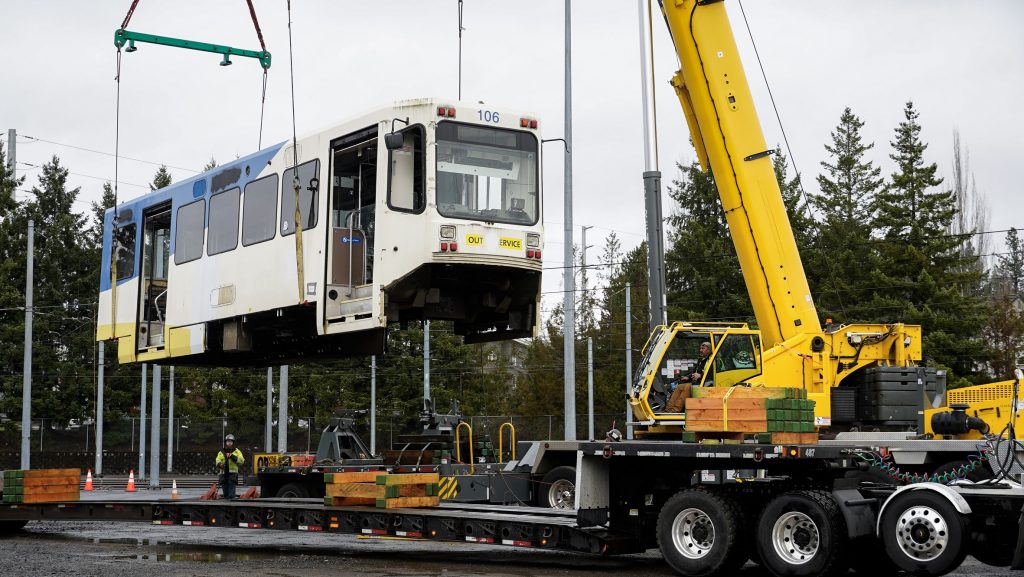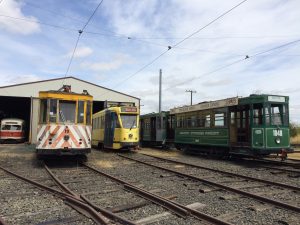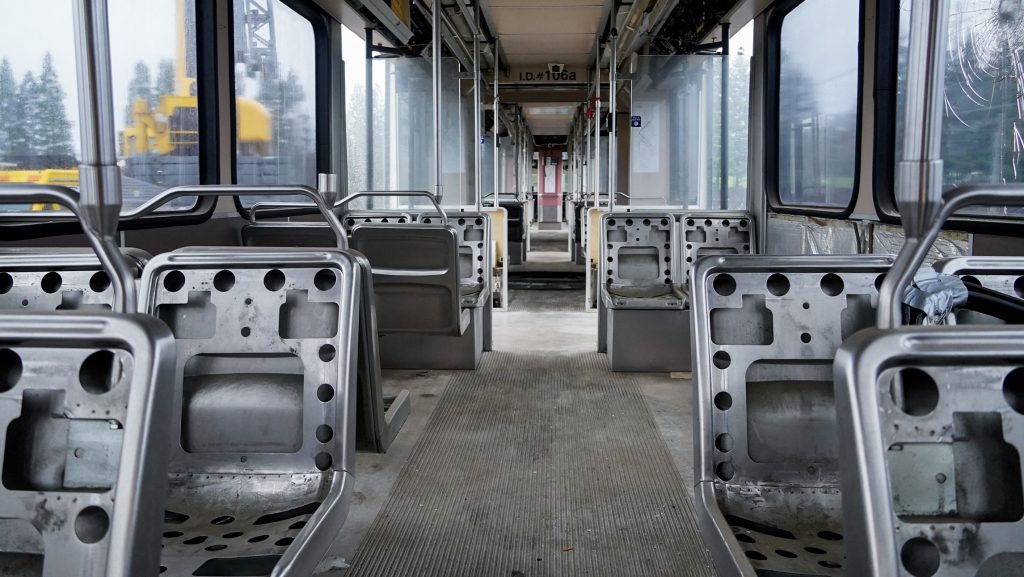Some Type 1s have been sent off to recycling to make room for the trains of the future

The first time Roger Andreassen walked up the steps of a MAX train, he felt at home. It was January 1986 and a mere 30 minutes into his job as a “commissioning engineer”— one of the people making sure that what was then TriMet’s new fleet of 26 light rail vehicles worked properly. The recent University of Portland graduate saw the future of regional transit in front of him: sparkling chrome and fresh vinyl seats, with a subtly European flavor to the design.
Up until then, the mid-1980s, TriMet had only run bus service. The introduction of MAX light rail was a decades-in-the-making shift in transportation planning—not just for TriMet, but for most of North America. The agency was only the second city on the West Coast—behind San Diego, Calif.—to construct a light rail line, and one of only a handful in all of the United States, Canada or Mexico. TriMet had hired a few experts from the East Coast to assist with getting the new trains and line ready, but for the employees and consultants of a brand new rail system like TriMet’s MAX, it was trial by train.
“People like me—we just learned on the job,” Andreassen says, recalling that early experience.
It’s been 38 years and Andreassen is back with TriMet as a project manager, this time with decades of experience under his belt as he works to test and commission TriMet’s newest fleet of light rail vehicles. He’s part of a larger team of experts working on the process of bringing these state-of-the-art trains to riders.
Known as the Type 6 and manufactured by Siemens Mobility, these light rail vehicles come with a variety of new features, including the ability to predict maintenance issues before they happen. There are digital destination displays for riders, LED lights along the doors to assist with boarding and improved temperature controls. The biggest difference are the computers. The Type 6 vehicles can be described as a computer network on steel wheels. By comparison, the first trains TriMet introduced in 1986 were completely analog.
Farewell, Type 1s
You may be seeing fewer Type 1s rolling by, with their distinctive boxy look and elevated floors. TriMet has begun decommissioning some of the trains to make room for the Type 6s at our Ruby Junction Operating Facility. The process involves our mechanics first removing parts from the trains’ HVAC systems, followed by the wheel trucks, gearbox oil, hydraulic fluid, batteries and other components that cannot be recycled.
Once that happens, most vehicles are separated into sections and then placed onto the back of a 50-foot truck for transport. For a fully intact vehicle, the process is more complicated. There is only one company on the West Coast with the ability to transport an intact vehicle, and it requires special permits. Where it can go is limited as well because of its size. It’s a process that takes considerable time and planning and must be coordinated to take place as TriMet receives new trains to test.
Preserving history

The Type 1s aren’t gone yet, nor are they all going away forever. At Radius Recycling in North Portland, they’re being turned into rebar, which will be used to construct new buildings. Plans also call for the preservation of at least one MAX train car. It will go to the Oregon Electric Railway Museum in Brooks, Ore., the largest trolley museum in the Pacific Northwest, featuring a collection of vehicles from around the world.
At the museum, the Type 1 would join other vehicles from Portland’s transit past—including cars from the Mt. Hood, Broadway, Council Crest and Portland interurban systems. The museum features an operational rail yard, where visitors can take rides on the various vehicles. That’s the proposal for the Type 1, allowing rail enthusiasts to continue hopping on board the original MAX well into the future.
Type 6 testing
Preparing the Type 6 trains for service is underway, with 14 of the 30 vehicles currently on site at Ruby Junction.
They continue to go through rigorous static and dynamic testing on the test track at Ruby Junction and on the mainline during non-revenue service hours. This is the final step where engineers test propulsion and braking at high-speed. Upon completion of testing, the vehicles then operate at least 1,500 mile in simulated revenue service prior to being certified to transport passengers. It’s an extensive process, during which every system is tested multiple times to ensure they meet all safety and performance requirements.
‘A better vehicle overall’

For Andreassen, he’ll be sad to see the Type 1s go, but he’s also excited about the next generation of MAX trains. The older cars were expected to last 30 years, and they have exceeded that. They have become the very definition of vintage, with replacement parts having become impossible to obtain, he says.
Now when he walks through a new Type 6, he sees how just how much regional transit has evolved from the early days nearly 40 years ago.
“You’re trying to strive for a better vehicle overall,” Andreassen says. “For TriMet, it’s to have something that is cost effective and reliable, and for the riders it’s so they can enjoy it more.”
For more information about the next generation of MAX train, go to trimet.org/max6.
